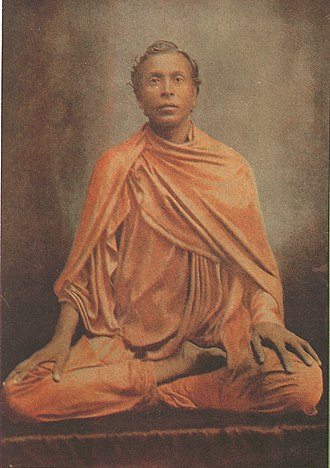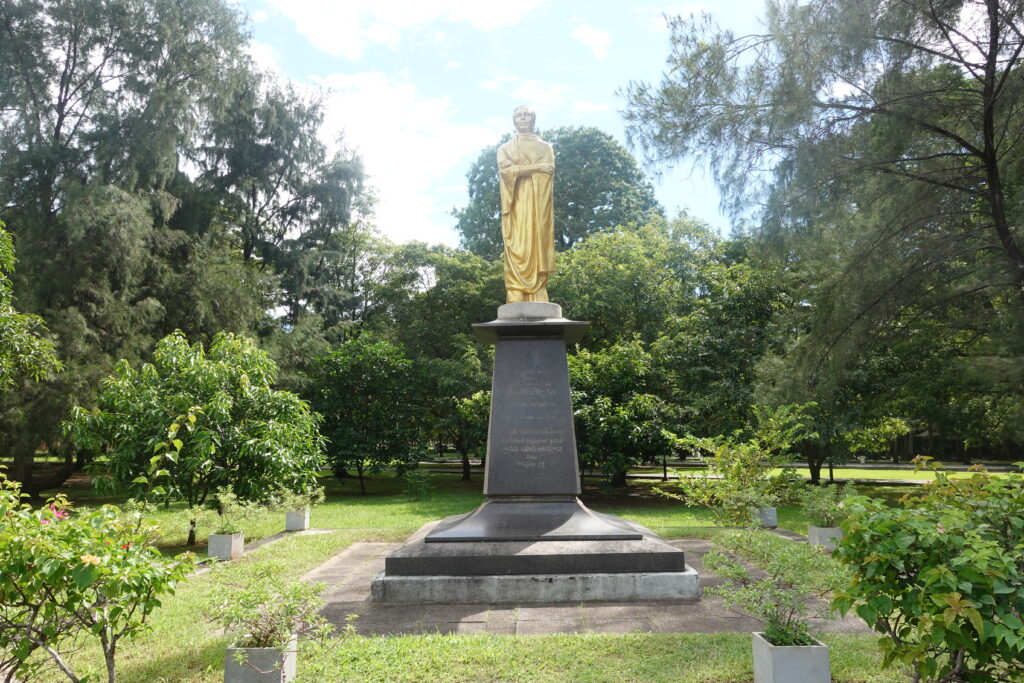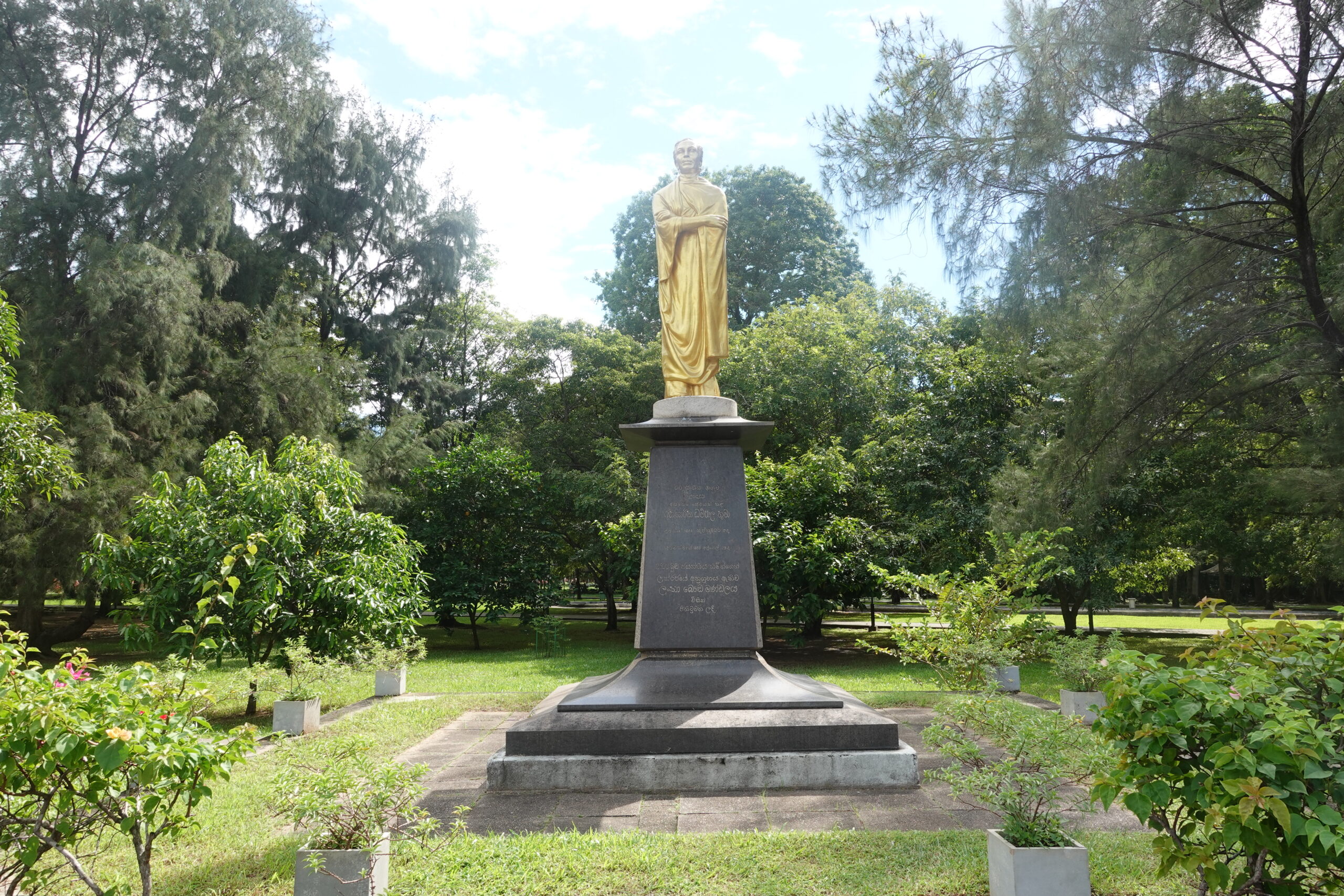Travels to Buddhist sites in India and Sri Lanka (43)
What is Protestant Buddhism in Dharmapala - The existence and impact of a new Buddhism that is also different from traditional Buddhism in Sri Lanka.
Previous Article(42) Experiencing pujas at the Buddha's Tooth Temple in Kandy: my thoughts on what traditional Buddhism in Sri Lanka is all about."I spoke about traditional Buddhism in Sri Lanka and Buddhist beliefs at the lay level in
Sri Lankan Buddhism has traditionally made a strict distinction between ordained and ordained believers. The form of the ordained person, who observes the precepts and maintains a distance from the secular world, is quite different from the form of the folk Buddhist faith.
As we saw in the previous article, Hinduism and indigenous deities are also enshrined in the precincts of the Buddha's Tooth Temple, and we have also introduced a truly Shinto/Buddhist syncretism in the temple's worship. I also told him about the Pirit Ritual, a Buddhist ritual and exorcism tradition. Traditional Sri Lankan Buddhism is different from the strict Theravada Buddhism we imagine. If anything, it is closer to our Japanese Buddhism.
What then caused such an "image gap"? Where did our image of Sri Lankan Buddhism come from?
The key to this is the "Protestant Buddhism" of the Dharmapala, introduced here.
Yes, this kind of strict image of Buddhism or "the Buddhism most faithful to Buddha's teachings" is the new Buddhism advocated by the Dharmapala.

For more information about Dharmapala(33) Dharmapala and Sinhala Buddhist nationalism: the major currents of modern Sri Lankan Buddhism."In that article, I mainly explained about the Dharmapala and "Sinhala Buddhist nationalism". In this article, on the other hand, I would like to talk about Dharmapala's Buddhism and European understanding of Buddhism.
First, let's take a quick look at the historical background of the dharmapala as a review.
In Sri Lanka, the active Protestant missions triggered an anti-Christian movement by Buddhists, especially from the mid-19th century to the mid-20th century.
The missionaries, who not only believed in the absolute superiority of Christianity, but also believed that Christianity and Buddhism were totally incompatible, engaged in a thorough critique of Buddhism in order to win converts or to expel "nominal Christians".
The Buddhists, feeling threatened, began to oppose the missionaries, but in the process, they also adopted the methods of the Christian missionaries. In this process, the Buddhists also adopted the methods of Christian missionaries, such as establishing local chapters, building buildings similar to Christian churches, sending preachers, mobilizing the public, collecting donations, and establishing printing presses and schools. This was networking beyond the traditional scope of geographical and blood ties, something that had probably never been done in Sri Lanka before.
In the course of this anti-Christian movement, Christianity was also violently attacked, and claims of a Buddhist sense of crisis were made, which led to the disappearance of much of the pluralistic and tolerant religious and ethnic culture that existed to a significant degree in pre-modern Sri Lanka, and the formation of a solid and fixed community of Sinhalese Buddhists. This was also the process by which many of the pluralistic and tolerant religious and ethnic cultures that existed to a significant degree in pre-modern Sri Lanka disappeared, leaving a solid and fixed community of Sinhalese Buddhists.
Some line breaks have been made to make it easier to read on smartphones, etc.
Akashi Shoten, Koji KawashimaSri Lanka and Ethnicity: The Formation of Sinhala Nationalism and Minority Groups.p20
I have told you in a previous article that it was the colonial rule by the British that triggered the Buddhist revival movement in Sri Lanka.
As mentioned in the above quote, the key point is that Sri Lanka was under British rule at the time, and English and Christian education were actively provided. Mission schools were established one after another in major cities such as Colombo, where the emerging elite were educated. In order to protect their own Buddhism, they started a movement to revive Buddhism, but an ironic situation occurred here.
It was supposed to oppose English and Protestantism, but in the end it could not help but adopt English and Protestant methods. That is, the establishment of branches and schools, publishing, and the absorption of Western oratorical methods. Moreover, the revival of Buddhism was also carried out in a context different from that of traditional Buddhism. In fact, Buddhism became Protestantized as well.
Yoshio SugimotoThe Legacy of Buddhist Modernism."The following is a brief summary of this.
The Buddhist reforms of the Dharmapala were a social reform movement, religiously influenced by Protestantism, and characterized by one Buddha, the elimination of witchcraft, and asceticism within this world.
This was nothing less than a plan to unify the Sinhala Buddhist system, which had originally been "mixed" with belief in gods and demons, under the authority of Buddha Shakyamuni.
Conversely, magical beliefs were regarded as "primitive" and "superstitious" and required belief in only one Buddha. Idolatry and ritualism were then criticized.
Dharmapala, like the villagers, harshly criticizes Buddhist monks for being lazy and staying in boring monasteries, and urges them to go out and learn first, then preach to the villagers. He urges them to go out and learn and then preach to the villagers, not through superstitious ritualism, but by preaching correct and pure Buddhism.
It was precisely a repetition of the critical call from Protestantism to Catholicism in the Reformation. This Protestant "unification" is the very sign of modernity that C. A. Beery refers to, and in that sense it is the definitive indicator of "Buddhist modernity.
Some words and quotations have been omitted to make it easier to read on a smartphone, etc.
Fudokyosha, Yoshio Sugimoto, "The Legacy of Buddhist Modernism: Anagarika Dharmapala and Nationalism," P81-82
What do you think? I am sure that many of you may have had an "aha" moment when you read this part of the article.
Yes. It was in this very context that traditional Buddhism was criticized as "superstitious" and "outdated" as described in the previous article. The Christian-educated Dharmapala absorbed Protestant teachings and applied them to Buddhism to create his own Buddhism. This is what it means to say that Sri Lankan Buddhism is both old and new. Traditional Buddhism is indeed old, but Protestant Buddhism as taught by Dharmapala is a completely new Buddhism born in the late 19th century.
Dharmapala asserts that the Buddhism he preaches is "pure Buddhism" devoid of superstition. He also claims that it is scientific, rational, and philosophical, and that it is the "correct Buddhism" that is most faithful to the teachings actually preached by the Buddha. As a result, he is a fierce critic of all other forms of Buddhism, not only traditional Buddhism in Sri Lanka, but also Mahayana Buddhism in other countries.
The "Mahayana non-Buddhist theory" controversy has been raging in Japan since the Meiji period (1868-1912). This is a criticism that Mahayana Buddhism is not true Buddhism because it was not preached by the Buddha himself, but was created later. This criticism was also caused by the English and Protestant aspects of the religious movement as well as the Dharmapala.
I have a lot to say about this area, but it would take up a tremendous amount of my time, so I will refrain here. If you are interested, please read Philip C. Almond'sThe Discovery of Buddhism in Britain."I would like you to read a book called It contains shocking facts.
I will keep my mouth shut for the remainder of this article. I feel that this article will confuse the readers with too much information. There are some things in the world that cannot be easily summarized. No, there are things that cannot be summarized.

Incidentally, this ascetic "Protestant Buddhism" of Dharmapala was not very popular among the Sinhalese. Only a few of the rising elite dedicated themselves to his teachings. It did not resonate with the Sinhalese people as a whole. In the end, it was "Sinhala Buddhist nationalism" that remained influential in his teachings.
In other words, his faith movement could not be persuasive to the general populace. His influence reached "Sinhala Buddhist nationalism" as a political movement.
Sinhala Buddhist Nationalism does not enforce Protestant asceticism. It also continues to teach incorporating traditional Hindu deities. But in its external agitation, it attacks other teachings.
As a political activist, Dharmapala was a powerful influence...
But his life as a religious leader ended in hardship, by Yoshio Sugimoto.The Legacy of Buddhist Modernism."I think exactly the same thing, as was written in the following paragraph.
In Japan, these were the stormy days of the end of the Tokugawa Shogunate and the Meiji period. There must have been tremendous opposition to the West and pressure to reform the old society. We must take into account that it was in this context that Dharmapala Protestant Buddhism was born. It is not enough to simply dismiss Dharmapala as a "conflict-induced nationalist. His life and thought are also of great significance for our Japanese history.
*Below is an article with reference books on India and Sri Lanka that we have referenced in this travelogue. Please refer to them.
periodA list of recommended reference books to help you learn about Indian history, religion, and culture."
periodA list of recommended books for "those who want to know more about Indian Buddhism."
periodA list of recommended books to help you get to know the Buddhist country of Sri Lanka."
Next Article.
Click here to read the previous article.
Related Articles





































